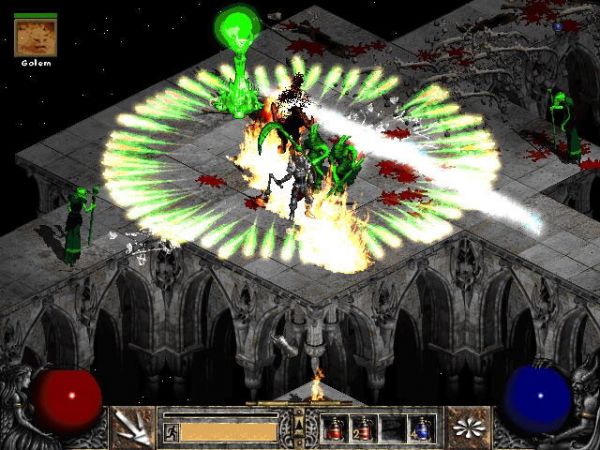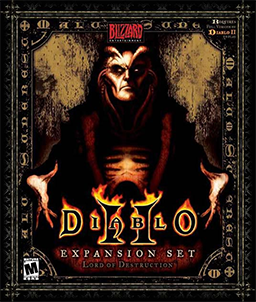
Many of the more tedious elements of the original Diablo were fixed, or at least addressed, in the sequel. Books of Town Portal and Identify saved space in your backpack, and the stash gave you more room to put your beloved loot, which could then be shared with other characters. Waypoints placed regularly throughout the expansive world greatly reduced downtime, and so did the new run ability, provided you had enough stamina. Minions could be hired in each act to assist on the quest, and added greatly to your chances of survival. Small changes, perhaps, but they made a big difference.
The strong co-op elements of the first game were improved in the sequel. Better battle.net integration, with a more security and precautions in place to avoid cheating and griefing, let you team up easily. The various classes covered each other’s weaknesses well. Sorceresses froze monsters in their tracks so their friends could take them down. Paladin auras buffed the entire group, as did some Barbarian warcries. Most classes had some way to help others, adding much to the sense of teamwork and cooperation. Diablo 2 took everything that made the original great, changed what didn’t work, and added in so much value that it, too, became extremely popular.

Diablo 2: Lord of Destruction (2001)
Though it came just a year after Diablo 2, Lord of Destruction made significant changes and refinements to the base game. Considering Diablo 2 was great to start, it was no small task to improve it. Unlike Hellfire, Lord of Destruction was developed in house by Blizzard themselves. New classes, a new act, and even more crafting options became available in this expansion.
The Assassin and Druid took the total number of classes available to a robust seven. They didn’t step on the other classes’ toes, carving out their own niche and playstyle. The Assassin was a deadly martial artist, capable of all sorts of devious tricks. Fist weapons were a specialty, and with whirling claws, powered-up finishing moves, and traps, the Assassin was lots of fun to play. The Druid was a nature-based spellcaster, among the most versatile in the game. A druid could focus on shapeshifting skills, concentrate on summoning the elements, or call upon plants and animals for assistance. Both classes were certainly worthy additions to the game.